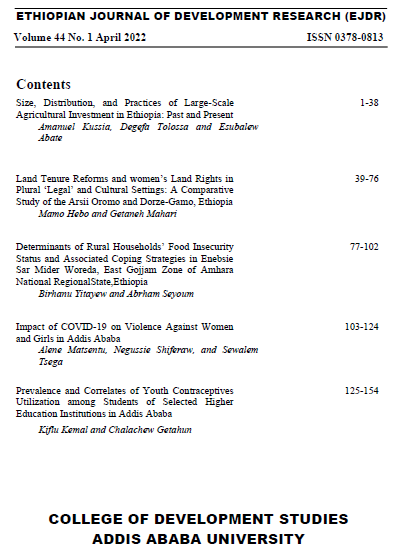Land Tenure Reforms and Women’s Land Rights in Plural ‘Legal’ and Cultural Settings: A Comparative Study of the Arsii Oromo and Dorze-Gamo, Ethiopia
DOI:
https://doi.org/10.20372/ejdr.v44i1.4396Keywords:
Arsii, Dorze, land rights, land tenure reform, legal pluralism, cultural settingAbstract
The question of women’s land rights in the context of multiple legal and cultural
settings has been at the center of academic and policy discourses. This paper
focuses on the implications of land tenure reforms for women’s land rights in
the context of plural legal settings considering Arsii Oromo and Dorze-Gamo
cultural contexts. The study relies on ethnographic data gathered from Kokossa
district (Oromia Regional State) and Chencha district, Southern Nations,
Nationalities, and Peoples' Regional State. The findings reveal that people in
both study sites are aware of state laws and policies that uphold women’s land
rights. However, women’s success in benefiting from legal provisions is
constrained by cultural factors, among others, taboos, norms of residence,
territorialization of lineages and rules of inheritance. Although social structural
issues largely limit women’s rights to own land in both cultural settings, the
Dorze case seems more complex and detrimental to women’s land rights as the
Gamo land tenure system is embedded in the indigenous religion that embraces
gome, a complex taboo system. Gome, which embraces taboos related to sex,
marriage and descent, effectively limits the right of women to live and work on
lands belonging to their patrilineal descent.

